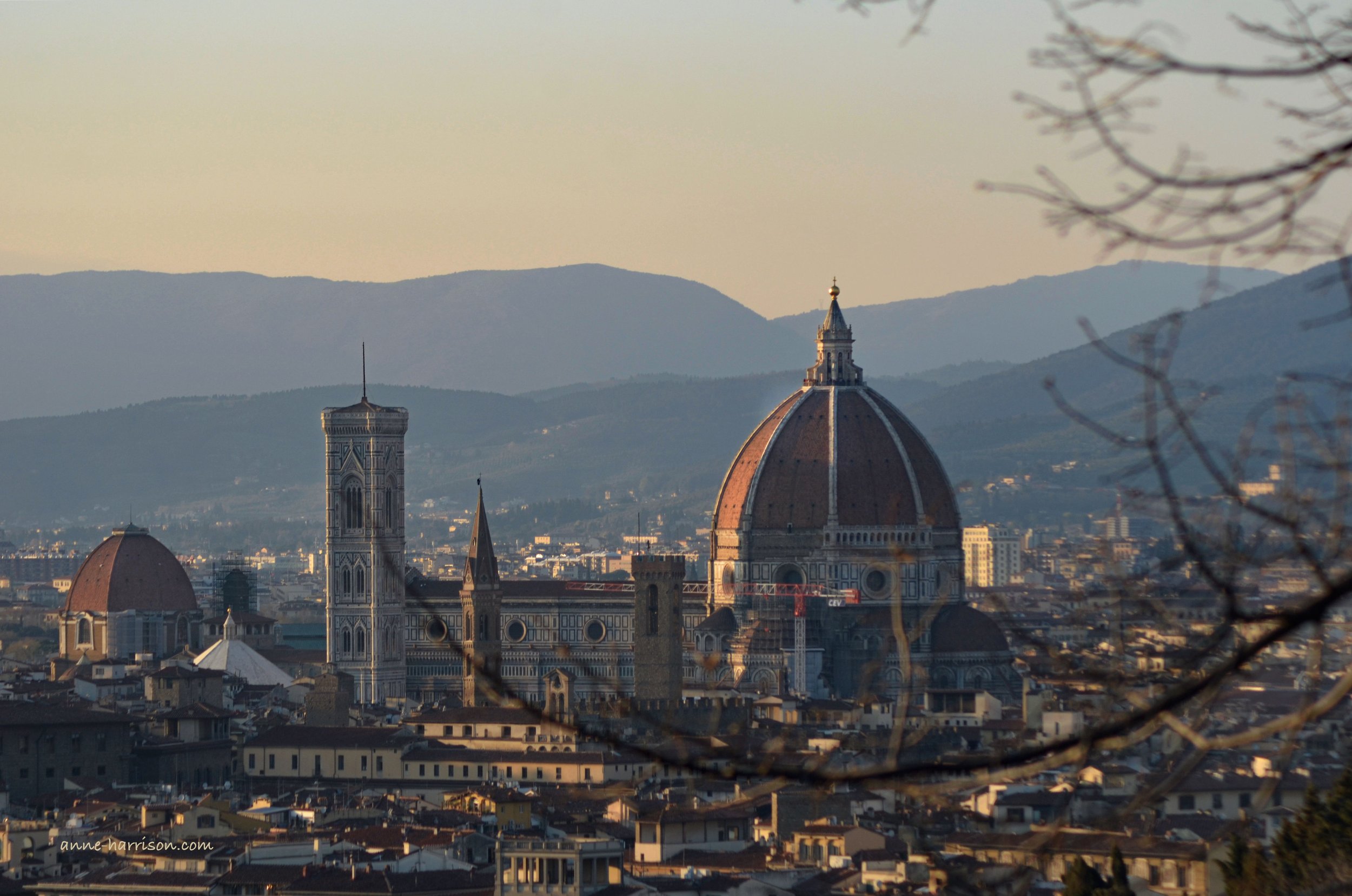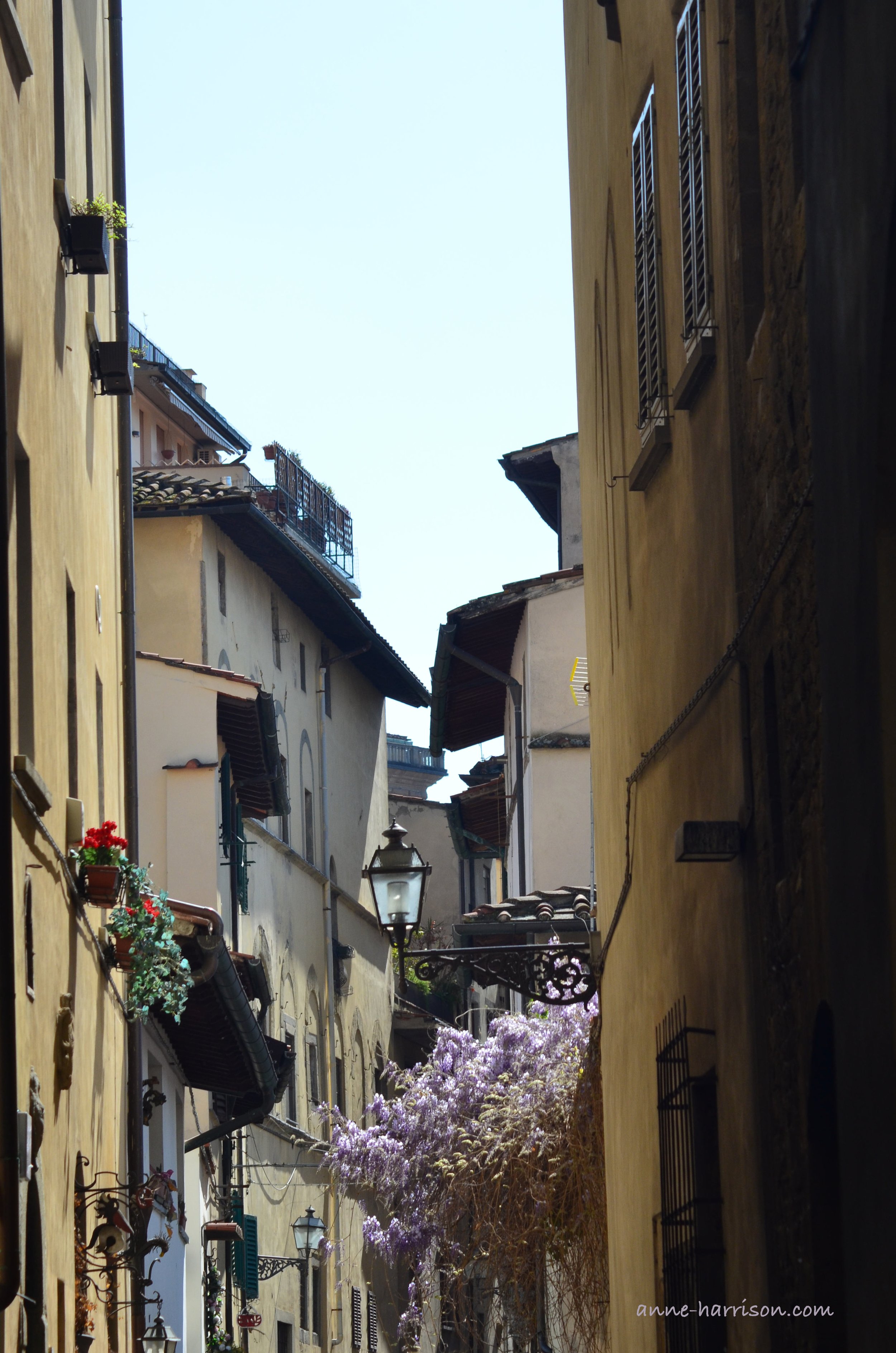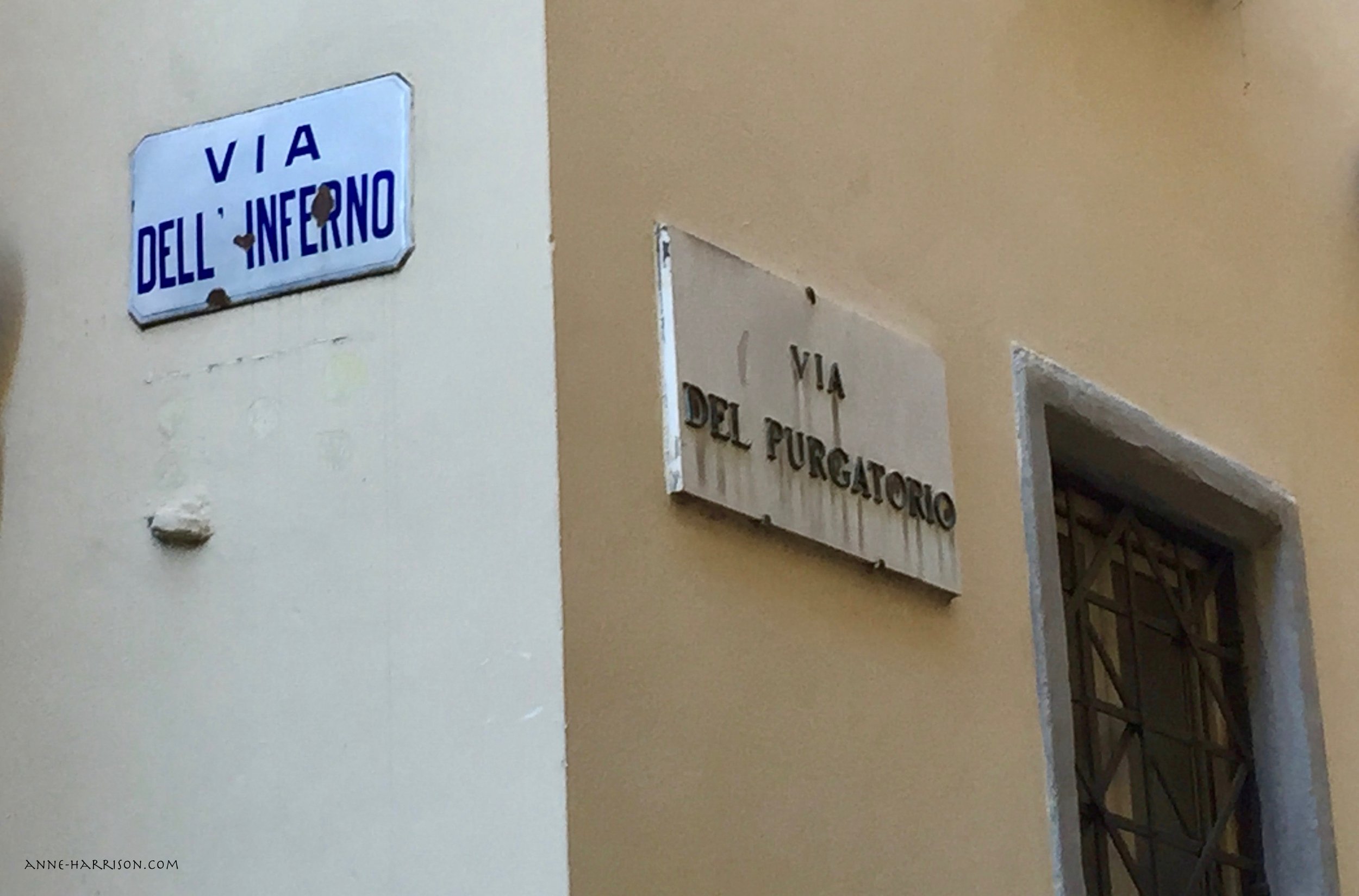Some reading suggestions for Florence
After a day of sightseeing, culture and one gelato too many, exhaustion is never far away — especially after a large Tuscan dinner! For those days when a little brainpower remains, here are some more suggestions should you feel like curling up with a good book.
After all, when in Florence, why not read a work either set here or inspired by the city, or about someone who lived here?
A Room With a View by E.M. Forster
There are many reasons why A Room With A View is often cited as the classic work to read in Florence, especially when visiting for the first time. It opens in that magical city and follows the upper-middle class Lucy Honeychurch as she discovers Florence under the patronage of her cousin and chaperone, Charlotte. The opening scene — where, with 'peevish wrangling,' the women complain their room does not overlook Florence — gives the novel its title.
The novel can be read simply as a romance set in Florence (and Rome and England), where the city's sights are as recognisable today as they were when Forster penned the work in 1908. Yet throughout the novel, the characters face a choice: to live life in a room with no view, to fight to get the room with the view (and so deprive another) or go outside and experience the view and accept the consequences.
A Room With A View was published at a time when many were beginning to reject a society which smothered any signs of individuality or free spirit. Women were also voicing emancipation. The restraining hand of religion on both society and the individual also runs through the work.
Forster contrasts the oppressiveness of Edwardian society with the more liberal Continent, where class barriers and social mores are less clear—where a well-bred young lady can witness a murder and fall in love with the wrong man.
In Italy, Lucy’s eyes are opened to the world, in all its rawness and passion. The novel closes with her choosing her own path, a radical approach at the time.
Although the work is over a century old, as I read A Room With a View, I walked the streets of Florence with Lucy, seeing the heart of the city I love so much through the eyes of her characters, leaving me (as always) longing to return.
Wandering the streets of Florence © A. Harrison
Galileo’s Daughter by Dava Sobel
Not far from Florence is the hamlet of Arcetri; indeed, the Torre del Gallo is easily seen from atop the Duomo. Here, in 1616, Virginia Galilei adopted the veil and entered the Convent San Matteo, taking the rather appropriate name of Suor Maria Celeste. She remained here for the rest of her life.
Maria Celeste was Galileo’s first child, and once entering the convent, she kept a regular correspondence with her father. 120 of these letters still exist (unfortunately, Galileo’s replies do not).
Sobel translates Maria Celeste’s letters from their archaic Italian, then weaves them through a narrative where the mythical genius of Galileo (who Einstein saw as the father of modern science) becomes a living person. Under her hand, Florence—and Italy—of the late 16th and early 17th centuries springs to life.
During the Renaissance, humans began questioning their place in the universe and their rights and responsibilities as an individual. Humanism became a dominant philosophical movement as the Thirty Years’ War and the return of the bubonic plague resulted in economic and social havoc across Europe.
Maria Celeste fills her letters with personal detail, opening the door to her harsh life in the convent (she was to die of dysentery at the age of 34). Galileo describes his daughter as ‘a woman of exquisite mind, singular goodness, and most tenderly attached to me.’
Throughout Galileo’s Daughter details of the Galileo household, both intimate and mundane, make an appearance. For example, using various citrus her father sends her from his garden, Maria Celeste makes Galileo his favourite sweets; he cooks and sends his daughter special spinach dishes in return.
Through Maria Celeste’s interest in her father’s work, Sobel details some of Galileo’s discoveries. Maria Celeste’s world contrasts so markedly with Galileo’s public life, the world of the Medici and the popes.
To publish his work regarding the Copernican system, Galileo required papal approval. Ultimately Urban VIII banned his work and declared Galileo a heretic, but not before the book had reached countries outside Italy and beyond the Pope’s control.
Despite Italy and Europe being in turmoil and Machiavellian intrigue weaving through every court, what a man saw through a telescope proved more consequential to authorities. The thought of the moon (a celestial object, and therefore perfect) bearing imperfections and man not being the centre of the universe brings into question their raison d’être.
Galileo was brought before the Holy Office of the Inquisition, accused of heresy, and spent the remainder of his life under house arrest. (In 1835, his book was finally dropped from the list of banned works, and in 1992 Pope John Paul II admitted the Church had made some mistakes regarding Galileo, but the formal judgment is yet to be revoked).
So much of Galileo’s Daughter is set in and around Florence, bringing both the work and Renaissance Florence alive. After finishing the work, I strongly recommend visiting the Mueso Galileo (behind the Uffizi), where many of the scientist’s instruments are on display.
The Divine Comedy by Dante Alighieri
Midway through life’s journey
I found myself in a dark wood wandering
I first read these opening lines in the air somewhere between Sydney and Florence. They struck a metaphysical chord within me, which has sounded ever since.
It is still easy to walk in the footsteps of Dante. His ‘bel San Giovanni’ —the Duomo and its adjoining Baptistery—remain the heart of the city. Dante was baptised here. Nearby is the Guildhall of Orsanmichel; he belonged to the Medici e Speciali, the guild of physicians, apothecaries and painters.He and Gemma Donati were wed in the 12th century Santa Margherita de’ Cerchi (they were betrothed when Dante was nine). This is also where he first saw Beatrice Portinari, the woman to be immortalised in his writing.
Dante began The Divine Comedy in 1308 while exiled from his beloved Florence. Dante never returned to his native city; even the tomb built for him in 1829 in Sante Croce remains empty. The pain of this banishment surfaces in his writing:
You shall leave everything you love most, this is the arrow the bow or exile shoots first. (Paradiso, XVII)
As well as having layer upon layer—upon layer—of allegory, The Divine Comedy is loaded with political, social, historical, literary and religious references. To read it thoroughly requires stamina if only to work through all the footnotes of a good edition, as well as cross-referencing to a companion tome on Dante.
Divided into three parts, The Divine Comedy is a medieval tour of Heaven, Hell and Purgatory. Opening on the night before Good Friday in 1300 and finishing on the following Wednesday, it follows Dante’s journey through these afterworlds.
The Roman poet Virgil guides him through the Inferno and Mount Purgatory (Virgil’s Aeneid had a strong influence on the work) whilst his beloved Beatrice escorts him through Paradiso, where love, truth and beauty intertwine.
To summarise Dante in a few paragraphs is not only impossible, it borders on travesty. At its most simple, The Divine Comedy is an allegory of the soul’s journey towards God. To reach God, man must constantly strive for morality and not become mired, or lost, in daily living. One must consciously choose the right path, rejecting all worldly distractions.
Dante’s influence on modern literature cannot be overestimated. He also had a direct development on both Tuscan and the development of the Italian language. Part of the difficulty in reading Dante is that The Divine Comedy is written in Tuscan. He extensively uses idiom and rhyme, and the poem’s meter—termed terza rima— fills the work with an energy easily lost in translation.
già volgeva il mio disio e ’l velle,
sì come rota ch’igualmente è mossa,
l’amor che move ’l sole e l’altre stelle.
now my will and my desire were turned,
like a wheel in perfect motion,
by the love that moves the sun and the other stars
Yet the heart of this epic poem, arguably one of the greatest in world literature, is a work of exceptional literary beauty, which ensnares the reader from across the centuries. This is what stayed with me as I wandered with Dante along the medieval streets of Florence.
Rather appropriately named streets © A. Harrison
The Lives of the Artists, by Giorgio Vasari
Vasari’s The Lives of the Artists is credited as the first work of art history. A contemporary of Michelangelo (whose talents, according to Vasari, including making the world's best snowmen), Vasari was himself a famed artist and architect. The Vasari Corridor which links the Uffizi to the Pitti Palace bears his name, and his works include The Last Judgement on the ceiling of the Duomo’s cupola.
Although biased towards the Florentine painters (in the first printing Titan did not rate a mention), Vasari’s work remains an amazing window into the Renaissance world. Indeed, Vasari was the first to use the word Renaissance (Rinascita - rebirth) in print.
Vasari also peppers his works with delightful bits of gossips and observations of the artistic life:
(these)rough sketches, which are born in an instant in the heat of inspiration, express the idea of their author in a few strokes, while on the other hand too much effort and diligence sometimes sap the vitality and powers of those who never know when to leave off.
Another is a (most likely fabricated) tale of Giotto painting a fly on a work by Cimabue, which Cimabue repeatedly tried to brush away.
The book is perfect for reading after a day of exploring the unending museum and art gallery which is Florence.
Enjoy my writing? Please subscribe here to follow my blog. Or perhaps you’d like to buy me a coffee? (Or a pony?)
If you like my photos please click either here or on the link in my header to buy (or simply browse) my photos. Or else, please click here to buy either my poetry or novel ebooks. I even have a YouTube channel. Thank you!
Plus, this post contains affiliate links, from which I (potentially) earn a small commission.







